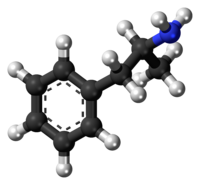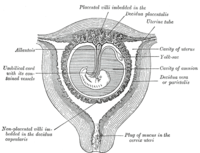
Evaluation of Bt Resistance in Helicoverpa zea (Lepidoptera: Noctuidae) Strains Using Various Bt Cotton Plant Tissues.
Sign Up to like & getrecommendations! Published in 2021 at "Pest management science"
DOI: 10.1002/ps.6611
Abstract: BACKGROUND Diet-overlay bioassays suggest that Helicoverpa zea (Lepidoptera: Noctuidae) field populations have developed resistance to some of the Bt insecticidal proteins that are constituents of the pyramids expressed in the second and third generation Bt… read more here.
Keywords: tissue; resistance; cotton plant; zea ... See more keywords

Prevalence and levels of deoxynivalenol and zearalenone in commercial barley and wheat grain produced in Southern Brazil: an eight-year (2008 to 2015) summary
Sign Up to like & getrecommendations! Published in 2017 at "Tropical Plant Pathology"
DOI: 10.1007/s40858-017-0152-6
Abstract: Fusarium head blight (FHB), caused mainly by Fusarium graminearum, is one of the most important diseases of barley and wheat in Brazil. The disease causes yield losses and contaminates grain with mycotoxins produced by the… read more here.
Keywords: barley; grain produced; wheat; barley wheat ... See more keywords

Zearalenone-induced aberration in the composition of the gut microbiome and function impacts the ovary reserve.
Sign Up to like & getrecommendations! Published in 2020 at "Chemosphere"
DOI: 10.1016/j.chemosphere.2019.125493
Abstract: Zearalenone (ZEA), as a contaminant commonly found in our daily diet, has been widely studied for its toxicity. However, the exact mechanism underlying ZEA induced reproduction disorders remains unclear. Our study aimed to elucidate the… read more here.
Keywords: zea exposure; composition; gut microbiome; function ... See more keywords

Larval movement and survival of Helicoverpa zea (Boddie) in seed blends of non-Bt and Bt maize containing Agrisure Viptera® trait: Implications for resistance management
Sign Up to like & getrecommendations! Published in 2020 at "Crop Protection"
DOI: 10.1016/j.cropro.2020.105339
Abstract: Abstract A seed blend refuge has been used to host susceptible insects for Bt maize insect resistance management (IRM) in the U.S. Maize Belt. One major concern in the use of seed blends is that… read more here.
Keywords: seed; larval movement; seed blends; resistance ... See more keywords

Resveratrol alleviates zea-induced decidualization disturbance in human endometrial stromal cells.
Sign Up to like & getrecommendations! Published in 2021 at "Ecotoxicology and environmental safety"
DOI: 10.1016/j.ecoenv.2020.111511
Abstract: Decidualization, which endows the endometrium competency to adopt developing embryo and maintain appropriate milieu for following growth, is a pivotal process for human pregnancy. The delicate collaboration between ovarian steroid hormones estrogen and progesterone governs… read more here.
Keywords: human endometrial; stromal cells; endometrial stromal; decidualization ... See more keywords

Hyperoside Attenuates Zearalenone-induced spleen injury by suppressing oxidative stress and inhibiting apoptosis in mice.
Sign Up to like & getrecommendations! Published in 2021 at "International immunopharmacology"
DOI: 10.1016/j.intimp.2021.108408
Abstract: Zearalenone (ZEA) is a ubiquitous mycotoxin contaminant that causes immune toxicity, apoptosis, and oxidative stress in animals. Hyperoside (Hyp) is a flavonol glycoside compound with antioxidant and anti-apoptotic properties. However, the potential of Hyp to… read more here.
Keywords: induced spleen; spleen injury; oxidative stress; zea induced ... See more keywords

HERP depletion inhibits zearalenone-induced apoptosis through autophagy activation in mouse ovarian granulosa cells.
Sign Up to like & getrecommendations! Published in 2019 at "Toxicology letters"
DOI: 10.1016/j.toxlet.2018.10.026
Abstract: HERP is an endoplasmic reticulum (ER) membrane protein and is strongly induced by stress conditions. A recent study has indicated that HERP cooperates in apoptosis during zearalenone (ZEA) treatment. However, regulatory mechanisms and the role… read more here.
Keywords: ovarian granulosa; granulosa cells; granulosa; apoptosis ... See more keywords

Comparison of the flavonoid profile of corn silks to select efficient varieties as trap plant for Helicoverpa Zea.
Sign Up to like & getrecommendations! Published in 2020 at "Journal of agricultural and food chemistry"
DOI: 10.1021/acs.jafc.0c01462
Abstract: In Martinique Helicoverpa Zea is a common pest of tomato responsible for significant economic losses. To fight against H. zea proliferation and damages corn could be used as a trap crop since H. zea larvae… read more here.
Keywords: corn; helicoverpa zea; trap plant; zea ... See more keywords

Integrated Metabolomics and Transcriptomics Analyses Reveal Metabolic Mechanisms in Porcine Intestinal Epithelial Cells under Zearalenone Stress.
Sign Up to like & getrecommendations! Published in 2022 at "Journal of agricultural and food chemistry"
DOI: 10.1021/acs.jafc.2c01107
Abstract: Zearalenone (ZEA) is a mycotoxin that frequently occurs in agricultural crops and related products and seriously threatens both animal feed and human food safety. To identify key metabolites and regulators involved in ZEA toxicological processes,… read more here.
Keywords: metabolism; zea; integrated metabolomics; zea exposure ... See more keywords

Zearalenone promotes follicle development through activating SIRT1/PGC-1α signaling pathway in the ovaries of weaned gilts.
Sign Up to like & getrecommendations! Published in 2022 at "Journal of animal science"
DOI: 10.1093/jas/skac058
Abstract: This study aimed to investigate the effect of zearalenone (ZEA) exposure on follicular development in weaned gilts, and its mechanism based on the silent information regulator 1 (SIRT1)/peroxisome proliferator-activated receptor-γ co-activator 1α (PGC-1α) signaling pathway.… read more here.
Keywords: weaned gilts; sirt1 pgc; signaling pathway; pgc signaling ... See more keywords

Bacillus licheniformis CK1 alleviates the toxic effects of zearalenone in feed on weaned female Tibetan piglets.
Sign Up to like & getrecommendations! Published in 2018 at "Journal of animal science"
DOI: 10.1093/jas/sky301
Abstract: Zearalenone (ZEA) is widely present in feedstuffs and raw materials, causing reproductive disorders in animals. In this study, Bacillus licheniformis CK1 was used to detoxify ZEA in feed for alleviating its effect in Tibetan piglets.… read more here.
Keywords: licheniformis ck1; control; group; feed ... See more keywords